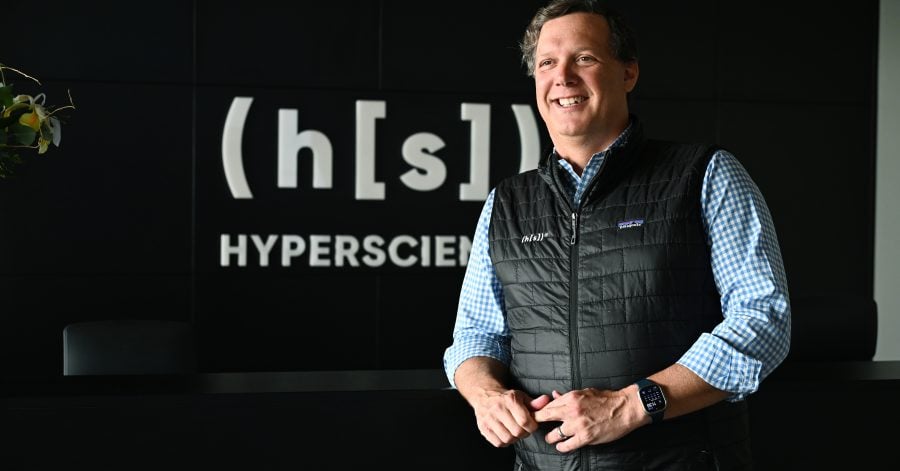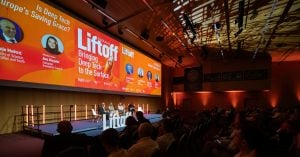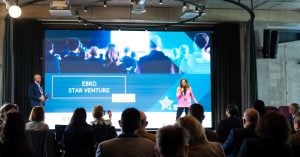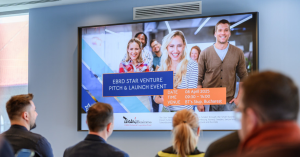Hyperscience is a market leader in hyperautomation and a provider of enterprise AI infrastructure software. The company is on a mission to unlock the value of an organization’s back office data and documents through the automation and orchestration of end-to-end processes. This enables organizations to transform manual, siloed processes into a strategic advantage, resulting in a faster path to decisions, actions, and revenue, positive and engaging customer, citizen, and patient experiences, and dramatic increases in productivity.
Leading organizations across the globe rely on Hyperscience to drive their hyperautomation initiatives, including American Express, Charles Schwab, Fidelity, HM Revenue and Customs, Mars, Stryker, The United States Social Security Administration, and The United States Veterans Affairs. The company is funded by top tier investors including Bessemer Venture Partners, Battery, FirstMark, Stripes, and Tiger Global.
We spoke with Andrew Joiner about this Bulgarian-born company and its growth ambitions that start with building the right team. Although now it operates from U.S. offices as well, Hyperscience still always starts their talent acquisition process from Bulgaria, out of respect for the exceptional local talent.
Having led Hyperscience for over a year, how do you evaluate the company’s current standing and what do you envision for its future?
I was brought a year ago to help scale the business. I had already been on this journey a couple of times in my career, and now we’re scaling on top of what was a pretty compelling technical vision of the company.
I think we’re going to disrupt the hyperautomation space, which started in the back office, and hasn’t been that automated over time.
About 20 years ago, most of the documents that were flowing into a company were read by computers, in an attempt to automate a process. That didn’t go well, as it was only about 50% to 60% accurate. On top of this, people in the back office handled the exceptions, along with offshore labor, the BPO market, and an entire outsourcing market was necessary to drive that solution.
What we’re doing with Hyperscience now after having built a solid technical solution is going back in and replumbing what’s been happening in the back office throughout the core infrastructure.
With our platform, we can get 99.5% accuracy and 98% automation, which is why I believe that Hyperscience is going to be one of those compelling software companies in the next decade.
Given Hyperscience’s pioneering efforts in AI long before the recent surge in interest in the field, how have the advancements in LLMs and generative AI over the past year influenced your company’s product or business strategy?
We were doing AI before it became contemporary. Hyperscience was founded three years before Google launched its seminal paper on the transformer technology that now is powering most of the generative AI.
We’ve been very early in our understanding of AI and our application of AI. In fact, for the founders, which were out of Bulgaria, this was actually their second machine learning company. They had realized building their first machine learning company just how technically difficult it is to build AI and that if done correctly, it could take it into businesses into enterprises, and solve a whole host of novel challenges.
We trained machine learning models to read human friendly information across languages almost as a human does, from a friendly layout. By training models that can read highly fluently, it allows us to go back to that source of truth and power their systems. From what we gather, this process isn’t going to change in the future, which requires a different approach.
Our infrastructure works very well with LLMs. There are some tasks that LLMs are great at, and others that our product is great at. We have an orchestration layer that allows you to just interplay and use either depending on the use case, which is why I’d say that AI is the center for the future, particularly in the back office. And while we have compelling technology, over time we’ll incorporate both types of AI for our customers.
From your perspective, how have the automation needs/ requirements of enterprise and government clients changed recently?
Government clients are almost leading the way in terms of adoption of AI and helping businesses understand how to bring it into their business. Most of the enterprises today are highly regulated. They’ve built up a set of standards on how to handle security restrictions and how to handle customer data.
AI introduces requirements and processes that are difficult for enterprises to deal with: they don’t have the people to help manage it internally, they have ethical concerns, as well as data concerns.
But the government is very familiar with AI, as they’ve been using it for warfare, logistics and so on. They already understand how to purchase and leverage it, and they also have the obligation to serve a very wide set of citizens. This means they have to handle things from handwriting to all sorts of forms, usually at scale.
What we do at Hyperscience has real ROI. One of our customers is a Veteran Affairs Association, that’s one of the second largest government agencies in the US. It provides healthcare to 9 million veterans, and the process of applying for claims and reimbursements was heavily manual and used to take months. After deploying our solution, we automated 99.5% of it, approximately a billion documents a year, and now claims and reimbursements are down to three days.
Could you elaborate on the envisioned trajectory for Hyperscience’s Bulgarian product development office, especially in terms of its contribution to the company’s global product strategy?
The Sofia office is a special place for us and our founding heritage. I visited it three times in my first year and every time I go on a trip I’m just impressed and excited about the talent that we’ve been able to attract. They’re energetic, innovative, passionate, and they have a culture that’s really hard to re-create. We have lunch together, we do meet-ups in the community, and it serves as a real beacon of innovation for the region. We have all layers of talent in our Bulgarian office – from core ML, to application engineering, QA, product management and product innovation. On top of that, we have some of our customer-facing functions, including a new customer function that most companies don’t have, which is essentially an expert data modeling service so we can help you train and build AI models.
Do we really have the full vision of using all of the talent in Bulgaria? We’ve got big ambitions, a beautiful office that’s on a top floor in Sofia, and I can see that team continuing to grow along with us. Plus, we open our roles in Sofia first, because it’s in the DNA of the company to cultivate this strong culture, and something that we’re especially proud of as a startup.
Is it difficult to manage hybrid slash remote workers across different locations and time zones and does it present any kind of challenges? And if so, what strategies to use to ensure effective collaboration?
It’s normal to have to be able to manage hybrid and remote teams. The real competitive advantage is if you can get an office-based culture like the one we’ve got in Sofia. There, while offering remote and hybrid opportunities, employees choose to actually collaborate in person.
By choice, the teams schedule and come into the office, have breakfasts and lunches, it’s the type of environment where colleagues bring dishes they’re proud of. What’s unique about Hyperscience’s culture in Sofia is that our colleagues want to come into the office, which is one of the hardest things to create as a startup, and something we want to support throughout all our growth stages.
And that’s about the human aspect of it. What about the technical aspect of it? What are the most fascinating aspects from the perspective of a product manager or an engineer when it comes to working with you?
I’ve always said the biggest signal of people staying inside a company is they have to enjoy the people that they work around and A players tend to attract A players, which is how we attracted some of the very best machine learning engineers. From the very beginning, we always went towards the highest end of the pay scale, because we were solving a very difficult problem for the rest of the world, which attracted a certain amount of technical aptitude and curiosity.
We’ve been able to extend that along with the company. In the early days, we were just seeing if this was even technically possible, and once it became technically possible, we thought about scaling it into an enterprise.
Today the types of people that we attract and recruit get to see the application of the work very quickly. It’s not just a research project that sits on the shelf, we’ve already solved core challenges.
How different is the company now from the way it was envisioned in the beginning?
We preserved the core of the company. And what happens with young companies that have raised a tremendous amount of capital is getting priorities on the right trajectory.
We’re looking for productive growth, adoption and expansion of our product set efficiently. We’re trying to do it quickly, but without running flat to inefficiency. My job is to make us fit to get us disciplined and ready and grow in a productive fashion.
Speaking of intentional growth, what is the main goal that Hyperscience aims to achieve in 2024?
Growth would be the metric that you would measure us on, but it’s a proxy for disruption because this technology doesn’t exist today. We are displacing essentially legacy technology (RPA and IDP), as well as business process outsourcing. It’s a confusing alchemy inside companies that we’re replacing, and the best proxy for our success is going to be growth.
Underneath that we’re winning and retaining customers, and we want to have a lot of fun doing it. We want to expand people’s careers and internally we have a mantra where we promote from within, we want to grow our employees.







